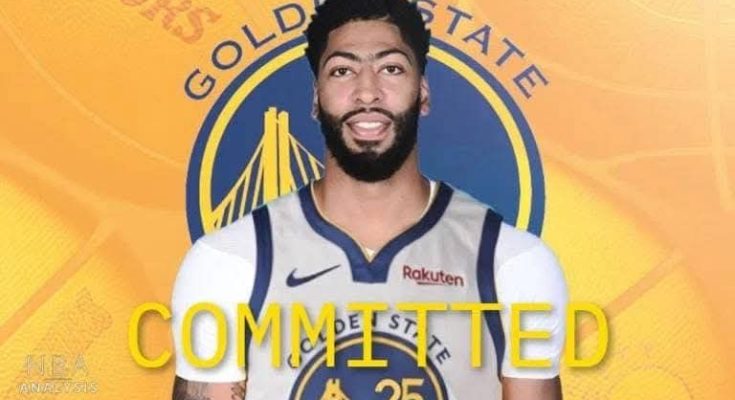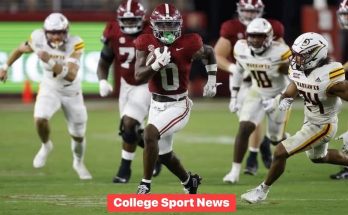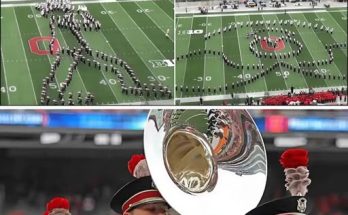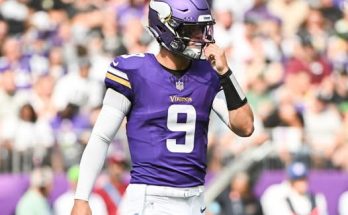Anthony Davis has always been a name synonymous with elite talent, defensive brilliance, and a rare blend of agility and size that makes him one of the most dominant big men in modern NBA history. But the shockwaves that reverberated across the league in July 2025 weren’t about a signature block, a 40-point game, or another All-Star nod. Instead, they came from an ink pen and a seismic shift in the basketball landscape. In a stunning move that defied months of speculation, Anthony Davis signed a \$200 million deal with the Golden State Warriors, turning the league’s power structure on its head and igniting a frenzy of debates, excitement, and strategic recalibration across all 30 NBA franchises.
For nearly a decade, Davis was the cornerstone of the Los Angeles Lakers, partnering with LeBron James to deliver the franchise’s 17th NBA championship during the bubble season of 2020. Since then, though plagued by injuries and fluctuating team success, Davis remained loyal to the purple and gold. That loyalty appeared unshakeable even as rumors occasionally swirled about his fit in evolving systems or concerns about his long-term durability. Lakers fans, teammates, and front office personnel had reasons to believe Davis would retire a Laker, especially after signing his last extension that tied him to the franchise through the 2027-28 season—at least on paper.
So how did this unprecedented shift happen? How did Davis find himself in San Francisco, donning the blue and gold, set to play alongside Stephen Curry and potentially shape a new dynasty?
It begins with context. The Lakers have faced growing uncertainty as LeBron James nears the end of his career. Though still performing at an elite level in his 40s, LeBron’s future year-to-year decisions have made it difficult for the Lakers to plan long-term. The front office has wrestled with how to thread the needle between contending now and preparing for life after LeBron. Meanwhile, the roster has often felt mismatched, with role players inconsistently supporting its stars. Even Davis, despite his tremendous two-way impact, frequently had to carry the defensive load while adjusting to shifting offensive roles. The burden was visible. And it was mounting.
Then came the Warriors. Long thought to be entering the twilight of their dynasty, the Warriors have been at a crossroads since their 2022 championship. Draymond Green’s suspension issues, Klay Thompson’s inconsistency, and aging legs across the core led to an early playoff exit in 2024 and complete absence in 2025. Yet the front office wasn’t ready to pull the plug. Rather, they were quietly retooling—not rebuilding. They cleared cap space with a series of calculated moves, including letting Klay Thompson walk, trading Andrew Wiggins and Jonathan Kuminga for assets, and signaling their desire to make a final historic run while Stephen Curry still has magic left in his shot.
The opportunity aligned perfectly. Davis, through backdoor negotiations via his agency, Klutch Sports, was looking for a fresh start. He saw in Golden State not just a team, but a system where he could thrive: one that would reduce his wear and tear, let him operate within more motion and spacing, and allow him to concentrate on what he does best—protect the rim, dominate the paint, and pick his spots offensively without being the sole engine.
The \$200 million figure—spread across four years—reflects both the magnitude of Davis’ value and the Warriors’ belief that he is the key to extending their era of contention. It’s also a staggering commitment given Davis’ injury history. But Golden State’s analytics team and medical staff reportedly conducted a deep dive into his body mechanics, conditioning regime, and long-term outlook before greenlighting the offer. They believe the move to a more perimeter-spaced offense will minimize the physical toll on Davis, extending his prime.
And then there’s Stephen Curry. Still among the most dangerous offensive threats in the league, Curry is entering the back half of his career with a desire to win but also with a recognition that he needs help—not just scoring help, but defensive cover. The Warriors’ championship formula has always included a dominant defensive presence inside—remember Andrew Bogut, JaVale McGee, or even Kevon Looney’s underrated run. But none of them compare to what Davis brings: a mobile 7-footer who can guard all five positions, alter any shot, and still drop 30 on the other end. His presence allows Curry to conserve energy on defense, frees up shooters with his screening and high-post play, and lets the Warriors reinvent their “Death Lineup” with more size and length than ever before.
The ripple effects of this signing are profound. Across the Western Conference, general managers are scrambling. The Denver Nuggets, who believed they had the size advantage in Nikola Jokić, now face a direct counter. The Phoenix Suns, with their trio of Kevin Durant, Devin Booker, and Bradley Beal, must now game-plan against Davis’ elite defense in potential playoff matchups. The Dallas Mavericks and Minnesota Timberwolves also must reckon with the fact that the Warriors are no longer fading—they are reloaded.
The Lakers, meanwhile, are left reeling. While they will receive draft compensation and a couple of players as part of a complex sign-and-trade that helped facilitate the deal, the loss of Davis marks the end of an era. It signifies not just the departure of a superstar, but the departure of an identity—defensive toughness, post dominance, and a vision built around twin superstars. In many ways, the Lakers now enter the full LeBron twilight era with uncertainty. Without Davis, the team’s defensive structure collapses, and with no immediate replacement in sight, they may have to pivot toward a rebuild.
For Davis, the decision wasn’t purely about rings or money—though both are now very much in play. Sources close to the All-NBA center suggest that he was intrigued by the chance to play a smarter, less physically demanding brand of basketball. Golden State’s ball movement and spacing are custom-built for a player like him who thrives in rhythm, especially when he’s not forced to manufacture every bucket. He also valued the Warriors’ organizational stability, something the Lakers have struggled with at times in recent years amid coaching turnover and inconsistent front office strategy.
Moreover, Davis is said to be inspired by Curry’s leadership and humility. The two reportedly met several times during the offseason to discuss vision, chemistry, and how they see the game. Those meetings solidified Davis’ belief that the Warriors offered more than just a chance to win—they offered a basketball home where his skills would be understood and maximized.
Critics, of course, are not silent. Questions about Davis’ durability remain front and center. Can he stay healthy for a full playoff run? Will he be able to integrate quickly into a system that demands constant motion and quick reads? And what happens if things go south—will Golden State regret mortgaging their future cap flexibility on a player with a history of lower-body injuries?
The Warriors, however, are betting on more than just health. They’re betting on their culture, their system, and the transcendent synergy between an all-time great shooter and an all-time great defender. They’re also betting that with Davis on board, they can attract the right role players to complement this new core. Already, reports indicate that several veterans are lining up to take minimum deals just to chase a title alongside Curry and Davis. Names like Joe Ingles, Seth Curry, and Jae Crowder have been linked to Golden State in recent days.
On the court, expect the Warriors to deploy Davis in a hybrid role—anchoring the defense while operating as a dynamic roller, mid-post passer, and occasional stretch shooter. His ability to play both center and power forward gives head coach Steve Kerr flexibility to experiment with a variety of lineups. Imagine a closing five of Curry, Gary Payton II, Moses Moody, Draymond Green, and Davis. That’s defense, IQ, spacing, and switchability on steroids.
Off the court, Davis’ move signals a changing tide in how NBA stars are viewing their careers. No longer is legacy solely tied to loyalty or tenure with one team. It’s increasingly about maximizing potential, adaptability, and being part of something that challenges and elevates a player’s basketball identity. Davis, by choosing Golden State, is redefining what his next chapter looks like—and potentially adding more rings to a resume already Hall-of-Fame bound.
This also sets up a fascinating clash of legacies. If the Warriors do win another title with Davis, where does that put him historically? He’d have championships with two of the most iconic franchises in NBA history. He’d be one of the rare stars to successfully pivot between marquee teams and elevate both. And he’d be forever tied to the twilight years of Stephen Curry’s career, perhaps prolonging Curry’s greatness while redefining his own.
On the other hand, if the move doesn’t produce a title, the criticisms will be sharp. That Davis couldn’t win without LeBron. That he abandoned a team in flux only to find himself in a similar situation. That his health couldn’t sustain the pace of the Warriors’ system. It’s a high-stakes gamble—but one the Warriors were willing to make.
From an educational standpoint, this move teaches us much about the evolving economics and psychology of the NBA. Contracts are massive, but so is the pressure. The shift toward player empowerment, while exciting, also places enormous expectations on stars to produce immediately. Fit is more important than ever, and players are increasingly aware of their context, role, and long-term body management. Davis’ decision shows that money, while a factor, isn’t the only variable. System, health, organizational stability, and legacy all play significant roles.
As training camp approaches, all eyes will be on San Francisco. Can the Warriors recapture their former glory with a new centerpiece? Can Davis be both the backbone and the bridge to a new era? And can a move that stunned the league become the genesis of a second, possibly final, dynasty for Golden State?
Only time will tell. But one thing is clear: Anthony Davis’ \$200 million move to the Warriors is more than a headline—it’s a moment that could reshape the NBA’s future. Whether it results in banners or backlash, it will go down as one of the most consequential free agency decisions in league history. And for Davis, it might just be the chapter that defines his greatness.



